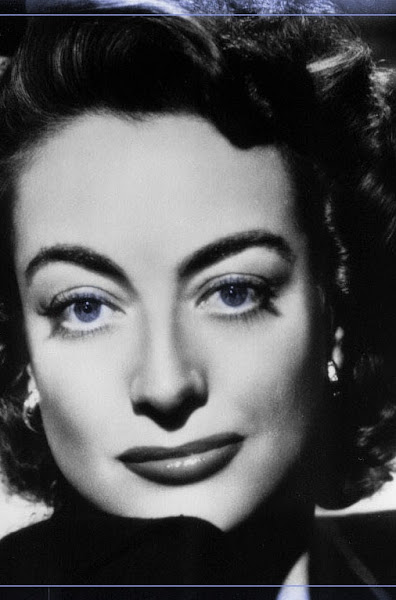Forget gaze theory. No wonder everyone's always loved the movies. You're about to find out why!
I have always had quite a penchant for big, gorgeous epic films such as "Gone with the Wind" and "Titanic." In the case of "Gone with the Wind," I have always chalked it up to my love of the rich colors in the mise-en-scène and to the lush arrangement of Max Steiner's score. In the case of "Titanic," I have long admired the grandeur of the ship's design, James Horner's "busy" score, and the sheer power of the sound, especially during the ship's sinking. Recently, I succumbed to Barnes & Noble's biannual 50%-off sale on Criterion Collection DVDs and Blu-rays. I was completely ashamed of my wretched DVD copy of Max Ophül's swan song, "Lola Montès" (1955), and so I decided I required this film on Blu-ray simply because of its radiant color scheme. I was not wrong to make this purchase, as I have come to glean from having screened the film in Blu-ray high-definition. The big move I had to make was to realize that I did not want the film simply because it was colorful and deserved to be presented in high-definition; rather, I enjoy that it is colorful, thereby necessitating high definition to amplify it as much as possible. I may have "cinesexuality" on the brain.
"Cinesexuality" is a term coined by scholar Patricia MacCormack to describe the desire to experience the cinematic event sensually before we make meaning of it. By "cinematic event," she means to imply the spatiotemporally fixed confrontation between spectators and the film screen. Influenced especially by French philosopher Félix Guattari, MacCormack uses his theories on "expression" (i.e. abstraction, pre-meaning) and asemiotics to explain how spectators gain pleasure from the film event regardless of their identities and in excess of the meaning of the images. MacCormack puts it, "Cinema is a nexus of reality/fantasy, offering planes of pleasurable intensity of colour, framing, celerity and sound: what Guattari calls cinema's a-signifying elements" (341). Guattari also cites "linkages, internal movements of visual images, ... rhythms, gestures, speech, etc." as conducive to "cinesexual" desire (342). Since this kind of pleasure derived from cinema does not correlate with pre-existing sexualities such as heterosexuality and homosexuality, MacCormack suggests "cinesexuality" — not a sexuality per se, so much as it provides a working expression to qualify spectators' unique desire for the a-signifying elements. The spectator and screen form a symbiotic bond whereby no distinction exists between the two during the presentation of the cinematic event, thereby facilitating the cinesexual expression.
When I say that you can be "cinesexual," too — well, you already are. MacCormack proposes that one must be a "cinemasochist" — one who enjoys pleasure from cinema's punishment — to engage "cinesexuality." What she means to say is that the giant film screen that looms over you in the movie theater dominates you and that you must submit. She calls it "passivity to the possibilities of the affects of the image" (352). This way, the explosion of light, color, sound, movement, etc. flows immediately into you, pleasing you before you make meaning of the images themselves. You enjoy the masochism because you "lose yourself" in the abstraction of the image(s) before you. "Submission to a-signification is a step rather than the taking up of a marginal position," she writes (353). Remember: You "forget" your identity in this process. "Cinesexuality is a form of sexuality enjoyed by all bodies," she concludes (353).
Maybe I am not actually digging Max Steiner's score from 'Gone with the Wind' per se. Instead, I am digging some quality of the horn or of the violins — the pitch, the dynamics, or a particular turn-of-phrase. I have always felt as though the leap between the first two notes of the most famous motif from "Tara's Theme" sweeps me. I usually aggrandize his entire score as "sweeping," although I usually refer only to "Tara's Theme." Meanwhile, I revel in the opulent colors of 'Gone with the Wind' purely for the scopic experience. This engagement with the cinema is not of a readily available sexuality. I seek and derive pleasure for my eyes from the potential for luxuriant color.
This reminds me of why I bought "Lola Montès" in the first place.... When I stare at my 47" HDTV, I lose myself in the scheme of sumptuous colors and florid movement in the "Lola Montès" circus show. My subjectivity is unfixed and fluid among the transposition of color, sound, light, and movement. I desire it and take pleasure from it. I am not sure what your opinion is — if you prefer big, showy films, that is — but if something about their bombastic play of color, sound, light, etc. moves you, you ought to consider your own "cinesexuality" and bask in it, like me. ■
_____________________________________________________
For further reading on "cinesexuality," check out:
MacCormack, Patricia. "A Cinema of Desire: Cinesexuality and Guattari’s A-signifying Cinema." Women: A Cultural Review 16.3 (2005): 340-55. Print.
-or-
MacCormack, Patricia. Cinesexuality. Burlington, VT: Ashgate, 2008. Print.
Note: Citations in this blog posting come from the article and not from the book itself.
I have always had quite a penchant for big, gorgeous epic films such as "Gone with the Wind" and "Titanic." In the case of "Gone with the Wind," I have always chalked it up to my love of the rich colors in the mise-en-scène and to the lush arrangement of Max Steiner's score. In the case of "Titanic," I have long admired the grandeur of the ship's design, James Horner's "busy" score, and the sheer power of the sound, especially during the ship's sinking. Recently, I succumbed to Barnes & Noble's biannual 50%-off sale on Criterion Collection DVDs and Blu-rays. I was completely ashamed of my wretched DVD copy of Max Ophül's swan song, "Lola Montès" (1955), and so I decided I required this film on Blu-ray simply because of its radiant color scheme. I was not wrong to make this purchase, as I have come to glean from having screened the film in Blu-ray high-definition. The big move I had to make was to realize that I did not want the film simply because it was colorful and deserved to be presented in high-definition; rather, I enjoy that it is colorful, thereby necessitating high definition to amplify it as much as possible. I may have "cinesexuality" on the brain.
"Cinesexuality" is a term coined by scholar Patricia MacCormack to describe the desire to experience the cinematic event sensually before we make meaning of it. By "cinematic event," she means to imply the spatiotemporally fixed confrontation between spectators and the film screen. Influenced especially by French philosopher Félix Guattari, MacCormack uses his theories on "expression" (i.e. abstraction, pre-meaning) and asemiotics to explain how spectators gain pleasure from the film event regardless of their identities and in excess of the meaning of the images. MacCormack puts it, "Cinema is a nexus of reality/fantasy, offering planes of pleasurable intensity of colour, framing, celerity and sound: what Guattari calls cinema's a-signifying elements" (341). Guattari also cites "linkages, internal movements of visual images, ... rhythms, gestures, speech, etc." as conducive to "cinesexual" desire (342). Since this kind of pleasure derived from cinema does not correlate with pre-existing sexualities such as heterosexuality and homosexuality, MacCormack suggests "cinesexuality" — not a sexuality per se, so much as it provides a working expression to qualify spectators' unique desire for the a-signifying elements. The spectator and screen form a symbiotic bond whereby no distinction exists between the two during the presentation of the cinematic event, thereby facilitating the cinesexual expression.
When I say that you can be "cinesexual," too — well, you already are. MacCormack proposes that one must be a "cinemasochist" — one who enjoys pleasure from cinema's punishment — to engage "cinesexuality." What she means to say is that the giant film screen that looms over you in the movie theater dominates you and that you must submit. She calls it "passivity to the possibilities of the affects of the image" (352). This way, the explosion of light, color, sound, movement, etc. flows immediately into you, pleasing you before you make meaning of the images themselves. You enjoy the masochism because you "lose yourself" in the abstraction of the image(s) before you. "Submission to a-signification is a step rather than the taking up of a marginal position," she writes (353). Remember: You "forget" your identity in this process. "Cinesexuality is a form of sexuality enjoyed by all bodies," she concludes (353).
Maybe I am not actually digging Max Steiner's score from 'Gone with the Wind' per se. Instead, I am digging some quality of the horn or of the violins — the pitch, the dynamics, or a particular turn-of-phrase. I have always felt as though the leap between the first two notes of the most famous motif from "Tara's Theme" sweeps me. I usually aggrandize his entire score as "sweeping," although I usually refer only to "Tara's Theme." Meanwhile, I revel in the opulent colors of 'Gone with the Wind' purely for the scopic experience. This engagement with the cinema is not of a readily available sexuality. I seek and derive pleasure for my eyes from the potential for luxuriant color.
This reminds me of why I bought "Lola Montès" in the first place.... When I stare at my 47" HDTV, I lose myself in the scheme of sumptuous colors and florid movement in the "Lola Montès" circus show. My subjectivity is unfixed and fluid among the transposition of color, sound, light, and movement. I desire it and take pleasure from it. I am not sure what your opinion is — if you prefer big, showy films, that is — but if something about their bombastic play of color, sound, light, etc. moves you, you ought to consider your own "cinesexuality" and bask in it, like me. ■
_____________________________________________________
For further reading on "cinesexuality," check out:
MacCormack, Patricia. "A Cinema of Desire: Cinesexuality and Guattari’s A-signifying Cinema." Women: A Cultural Review 16.3 (2005): 340-55. Print.
-or-
MacCormack, Patricia. Cinesexuality. Burlington, VT: Ashgate, 2008. Print.
Note: Citations in this blog posting come from the article and not from the book itself.

.jpg)

.jpg)
.jpg)


No comments:
Post a Comment